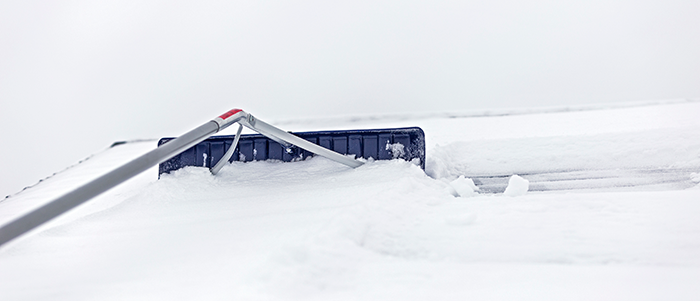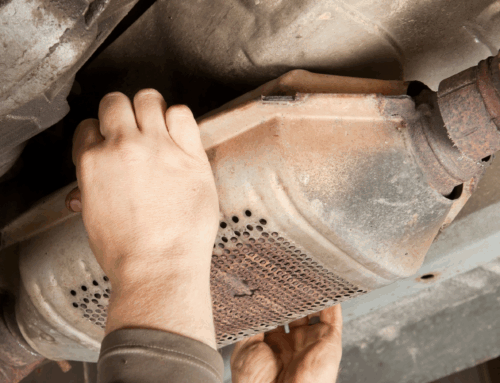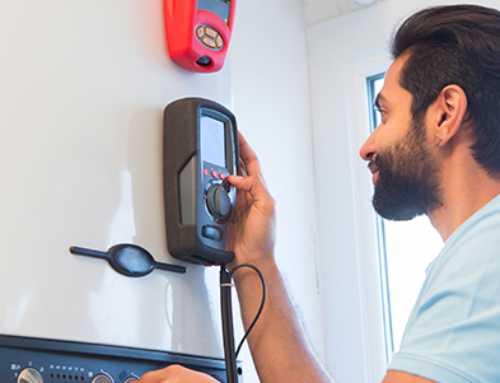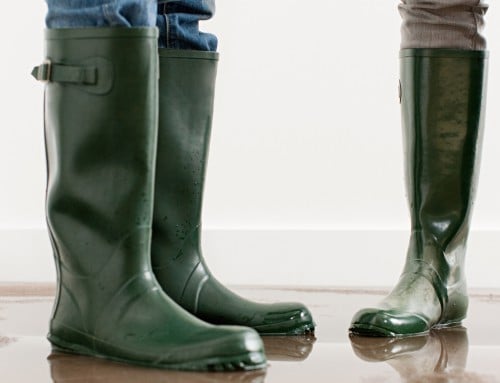In the winter, the roof of your property endures the impact of snowfall, ice storms and hail. The accumulation of snow and ice can severely damage your property, causing water to leak into walls, ceilings, and other areas. This is commonly known as an ice dam, which forms when the water from a full or partial blanket of melting snow is unable to drain off to the side, causing ice to grow along the edge of the roof. In 2019, CBC reported an increase in insurance claims from homeowners across northern Ontario related to heavy snowfall and ice damming.
To help you get ready for severe winter weather, we’ve compiled some tips to keep in mind for proper roof maintenance, including sections on how to safely remove snow and types of roof coverings. For more information about general roof inspection, refer to this guide.
Safe removal of snow buildup on your roof
As a rule of thumb, experts recommend that you remove snow when it’s more than 20 cm (8 in) thick. A structural engineer can help you determine whether your roof can handle the weight of heavy snow and can advise you based on the age and condition of your building. We’ve created a template you can use to keep track of snow removal activities, including sections to track temperatures and level of snowfall.
Follow these tips during the process to reduce risk of damage to your roof:
- Avoid sharp tools such as axes or picks and use rubber mallets to break up ice.
- Avoid using extreme heat such as a welding torch, as this could damage your roof.
- Use wood or plastic shovels and stop at least 10 cm (4 in) above the surface.
- Use de-icing salt carefully, as it can speed up corrosion of your roof’s metal components.
- Map out areas where electrical wiring is installed so you can avoid them.
- Make sure there is proper water drainage.
During this process, set up a safety perimeter to ensure that no one is walking near your building. In a situation where an accident occurs, an incident report must be filled out with the right contact information, date, details of the incident and the signature of the person who witnessed it. Try and include dated photos of the incident and capture what footwear the injured person was wearing.
Should I hire a professional?
If you don’t have the right equipment or are unsure if you can physically do it yourself, you may choose to hire a contractor to help you safely remove excess snow from your roof. In this case, make sure you request and sign a written contract or service agreement outlining roles, responsibilities, and the work that needs to be done. A certificate of insurance can also help verify their reputation, and your broker can confirm if the coverage is suitable.
Roof coverings for the winter season
As a preventative measure, you may choose to invest in a roof covering that can help withstand severe weather conditions during winter months. Here are a few common types of roof coverings:
Built-up roof coverings: These coverings are made of reinforced fabric and bitumen (asphalt) and finished with a top layer of stone or gravel.
Modified bitumen roof coverings: These durable coverings are built for flat roofs, made of base and cap sheet membranes and topped with coloured granules, which are much like the gravel on built-up asphalt membranes.
Single-ply membrane roof coverings: These coverings are flexible sheets of synthetic polymer that can be divided into two main groups – thermoplastics and synthetic rubber. Examples include Ethylene Propylene Diene Monomer (EPDM) and Thermoplastic Polyolefin (TPO). EPDM roofing expands and contracts with temperature changes.
Shingle coverings: This type of covering is made with flat or curved tiles that interlock in a way that channels water off a pitched roof.
A structural engineer can help you decide which roof covering is most suitable for your property.
Protecting your business with reliable coverage
During an unpredictable Canadian winter, your business needs reliable coverage it can trust. Visit our business insurance page today to learn more about how we can tailor a solution that addresses each of your risks!
For more information on the impacts severe weather can have on your business, check out our whitepaper.
This blog is provided for information only and is not a substitute for professional advice. We make no representations or warranties regarding the accuracy or completeness of the information and will not be responsible for any loss arising out of reliance on the information.







